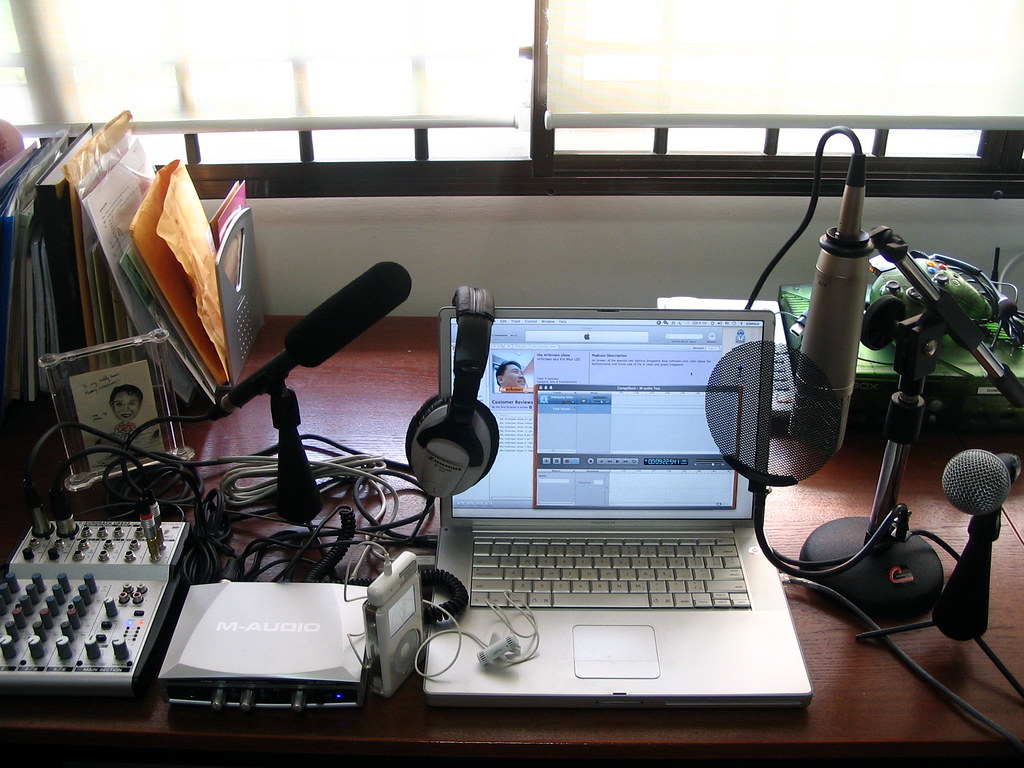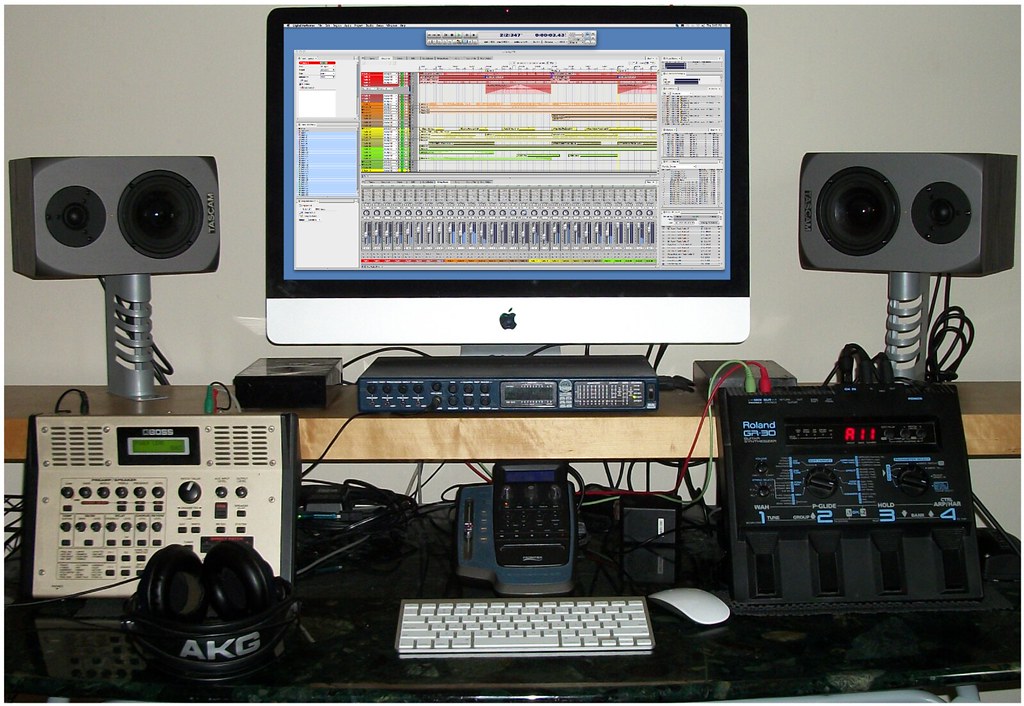Welcome to the world of podcasting, where high-quality audio is essential for a successful show. As a podcaster, you strive to create engaging content that captivates your audience and keeps them coming back for more. But what happens when your audio quality isn’t up to par? Listeners may tune out or move on to another show. Fear not, for there are solutions available. In this blog post, we’ll introduce you to nine essential audio mixing software programs that can help take your podcast quality to the next level. Get ready to maximize your podcast’s potential and connect with your audience like never before.

Understanding the Importance of Audio Mixing Software in Podcast Production
Audio mixing software plays a crucial role in producing high-quality podcasts. It allows you to edit, enhance, and balance the different audio elements in your podcast, such as music, sound effects, and voice recordings. With the right audio mixing software, you can achieve a professional-sounding podcast that engages your audience and keeps them coming back for more.
Using audio mixing software also helps you avoid common issues that can detract from your podcast’s quality, such as background noise, uneven volume levels, and poor sound quality. By taking advantage of the features offered by audio mixing software, you can create a polished final product that reflects your brand and resonates with your listeners.
Whether you’re just starting out or looking to take your podcast to the next level, investing in quality audio mixing software is essential. In the following sections, we’ll explore how to choose the right software for your needs and provide an overview of some of the best options available on the market today.
How to Choose the Right Audio Mixing Software for Your Podcast Needs
When choosing the right audio mixing software for your podcast needs, it is important to consider your budget and level of expertise. Some programs can be costly with a steep learning curve, while others may have limited features but are more beginner-friendly. It’s essential to determine which features you need for your podcast production, such as EQ controls, compression options, or automation tools.
Another factor to consider when selecting an audio mixing program is its compatibility with your operating system and recording equipment. Programs that work seamlessly with popular devices like microphones and headphones may save you time troubleshooting technical issues down the line.
Additionally, research user reviews and forums to get an idea of other creators’ experiences using the software in question. Look for information on reliability, customer support availability if something goes wrong, and overall satisfaction.
Ultimately,taking the time to assess these factors will help ensure that you select an audio mixing software that best suits your unique needs as a podcaster, setting yourself up for success in producing high-quality content that meets professional standards.

Top 9 Essential Audio Mixing Software for High-Quality Podcasts
Top 9 Essential Audio Mixing Software for High-Quality Podcasts
When it comes to producing a high-quality podcast, having the right audio mixing software is crucial. Audio mixing software allows you to adjust and fine-tune your audio recordings, ensuring that your podcast sounds professional and polished.
Here are the top 9 essential audio mixing software programs for podcast production:
- Adobe Audition
- Audacity
- GarageBand
- Hindenburg Journalist
- Logic Pro X
- Pro Tools
- Reaper
- Studio One
- WavePad
Each of these programs has its own unique features and benefits, so it’s important to choose the one that best suits your needs and budget.
Whether you’re a beginner or an experienced podcaster, investing in a quality audio mixing software can take your podcast to the next level and help you stand out in a crowded market.

Step-by-Step Guide on Using Audio Mixing Software to Enhance Your Podcast Quality
Step-by-Step Guide on Using Audio Mixing Software to Enhance Your Podcast Quality
Audio mixing software can be intimidating for beginners, but with a little bit of practice and guidance, you can produce high-quality podcasts that grab your listeners’ attention. To get started, download and install the audio mixing software of your choice. Next, import all the necessary audio files into the software.
Once you have all your tracks ready and loaded into the program, start by adjusting individual track levels, panning each track to its respective position in the stereo field as needed. Use EQ settings to remove any unwanted frequencies or enhance specific elements in each track.
Next up is adding effects such as reverb and compression which give your podcast depth while also controlling volume fluctuations respectively. Don’t overdo it; subtle adjustments are often enough to make a difference.
Finally, listen to everything closely before you export a final mix. Make sure there aren’t any pops or crackles present from editing elements together incorrectly or missing noise reduction steps earlier t=on during production.
Practice makes perfect when dealing with audio mixing tools in podcast production workflows – so keep experimenting until you find what works best for you!
Common Mistakes to Avoid While Using audio mixing software in podcast production
Overcomplicating the mixing process: Simplify Your Workflow
Overcomplicating the mixing process can lead to frustration and poor results. It’s important to simplify your workflow by focusing on the key elements of your podcast. Don’t get bogged down with unnecessary effects or plugins that can muddy your audio. Instead, prioritize clarity and balance in your mix. Another common mistake is using too many tracks, which can make it difficult to manage and create a cohesive sound. Stick to the essentials and use automation to streamline the process. By simplifying your workflow, you can avoid these common mistakes and create high-quality podcasts with ease using audio mixing software.
Neglecting Proper Level Balancing: Achieving a Balanced Sound
Neglecting proper level balancing can result in a poor audio quality for your podcast. It is important to achieve a balanced sound that ensures all elements of your audio are audible and properly mixed. This can be achieved by adjusting the levels of each element, such as voice, music, and sound effects, to create an even mix. Failing to do so can lead to distortion or one element overpowering the others in the final product. Make sure you regularly check levels throughout recording and mixing stages for a high-quality audio result with your chosen audio mixing software program.
Ignoring Noise Reduction Techniques: Eliminating Unwanted Background Noise
Ignoring noise reduction techniques can greatly affect the quality of your podcast. While audio mixing software is equipped with noise reduction tools, it’s important to use them properly in order to achieve that professional-sounding result. Some common mistakes include not setting the noise floor correctly, overusing or underusing the noise reduction tool, and failing to anticipate unwanted background noises during recording. Failure to address these issues can result in distracting sounds like hiss or hum on your final output. Make sure you take advantage of noise reduction tools available in your chosen audio mixing software to eliminate any unwanted sounds for a seamless listening experience.
Forgetting to Master Your Final Mix: Polish Your Podcast for a Professional Finish
One common mistake when using audio mixing software is forgetting to master your final mix. This step is crucial in achieving a professional and polished sound quality for your podcast. Be sure to use mastering plugins that can enhance the overall loudness, clarity, and balance of your audio tracks. Another essential aspect of mastering is EQ balancing, which eliminates unwanted frequencies and ensures each element of the mix has its own space without clashing with other components.
Neglecting this final step could result in an unpolished or amateurish sound quality that fails to engage listeners’ attention – so don’t forget it!
Tips and Tricks to Achieve Professional-Sounding Results with audio mixing software.
When using audio mixing software, precision is key to achieving professional-sounding results in your podcast. Start by adjusting your levels and EQ settings for each track so that it sounds clear and balanced. Take note of any unwanted background noise or hiss and use tools like noise reduction plug-ins to clean up the audio.
One common mistake when using audio mixing software is over-processing or adding too many effects. Remember that less can be more when it comes to sound effects or processing on vocals, as this can quickly overwhelm listeners’ ears.
Another pro tip is to experiment with different panning techniques to create a wider sense of space in your mix, making sure everything has its own place in the stereo field.
Lastly, don’t forget about mastering! Use a limiter plugin on the master bus to ensure consistent volume throughout your podcast episode without clipping or distortion, giving you that polished final touch. By utilizing these tips and tricks with an effective audio mixing software program, you’ll be well on your way to elevating the quality of your podcast production game.
Elevating your podcast Quality game: The Benefits of Utilizing an Effective audio mixing software
Utilizing an effective audio mixing software can do wonders for your podcast quality game. By incorporating the right tools and techniques, you can elevate your production value while making it sound more professional. With the plethora of audio mixing programs available in the market, you’ll be able to get started without having to break the bank.
One key advantage of using audio mixing software is that it provides ample opportunities for customization; you have complete control over your audio elements from start to finish. Moreover, utilizing audio mixing software enables you to make corrections or adjustments with ease, saving precious time and effort.
There’s no denying that investing time in learning how to use audio mixing software pays off in spades when producing a high-quality podcast. By mastering these essential tools, you’ll be well on your way towards achieving a polished final product something both you and your listeners will enjoy!
In conclusion, audio mixing software is an essential tool for podcast production. It can help you enhance the quality of your podcast and make it sound more professional. By choosing the right audio mixing software, you can take your podcast to the next level and engage your audience with high-quality sound. With the top 9 essential audio mixing software programs recommended in this article, you have a wide range of options to choose from based on your specific needs. By following the step-by-step guide and avoiding common mistakes, you can achieve great results with audio mixing software. So, elevate your podcast quality game today by utilizing an effective audio mixing software and take your podcast to new heights!
Questions
Who needs audio mixing software?
Anyone who wants to create or edit audio recordings.
What is audio mixing software?
Software used to mix and edit audio recordings.
How does audio mixing software work?
It allows users to manipulate sound waves and add effects.
What are the benefits of using audio mixing software?
It allows for greater control and creativity in audio production.
But isn’t audio mixing software expensive?
There are affordable options available for all budgets.
Can beginners use audio mixing software?
Yes, there are user-friendly options with tutorials available.
